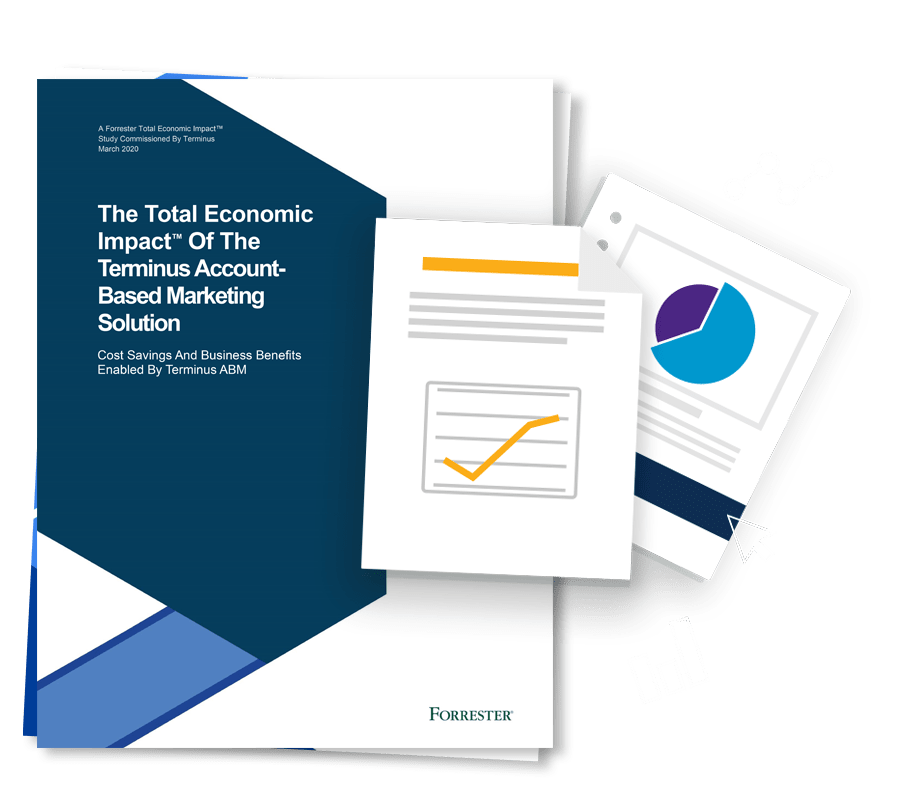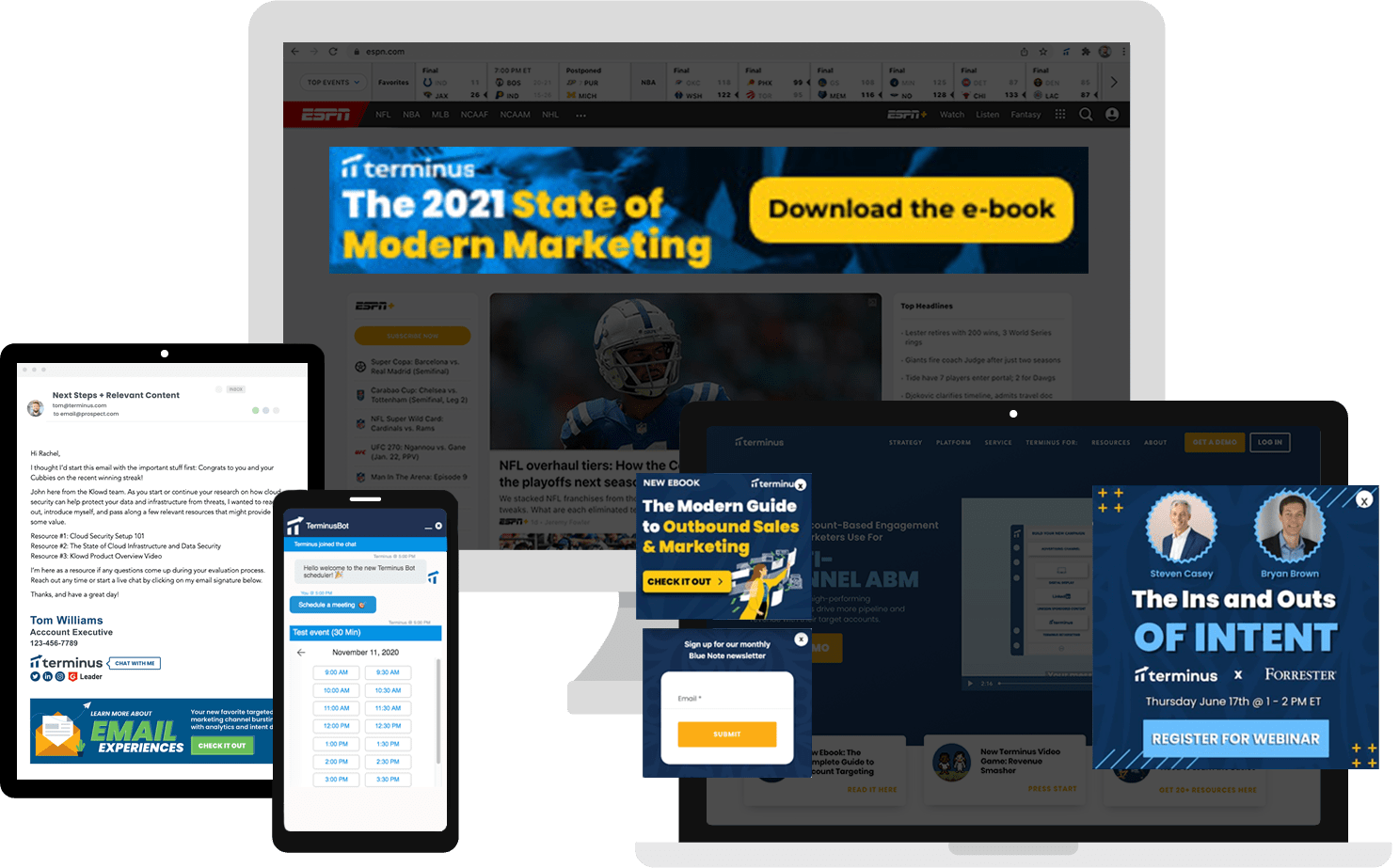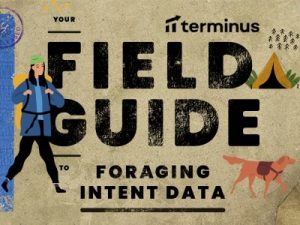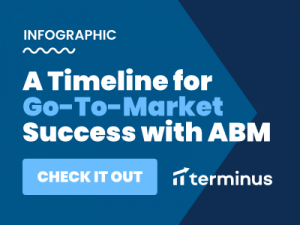Build the Perfect ABM Strategy for Your Revenue Teams
Access the most data, most channels, and most analytics all in one ABM platform. Terminus is here to put your ABM strategy into action. See how go-to-market teams today are achieving ROI from Terminus in this Forrester Consulting report.


The Most Data, Most Channels, and Most Analytics All in One Platform
Terminus brings together go-to-market teams (Marketing, Sales, Customer Success) to identify, market to, sell to, and retain their most important accounts.

Case Study: Pramata Lowers Customer Acquisition Cost by 60%
Access it here
Your Field Guide to Foraging Intent Data
Check it out
A Time for Go-to-Market Success with ABM
View the infographicABM Strategy
B2B marketers across many industries have started to adopt account-based marketing strategies. But an ABM strategy can’t be developed overnight. There are resources and technology available, such as the Terminus ABM platform, which makes it far easier for B2B marketers to change their strategies. There are resources available that help guide teams towards more personalized marketing.
What are the benefits of account based marketing? It depends on the company itself, which is why teams need to commit to investigating their options, learning more about ABM strategy, and figuring out whether it’s best for them.
Developing an account based marketing agency requires developing new processes from the ground up. While many marketers are now aware of the benefits of account based marketing, they may hesitate to adopt these benefits because of the challenges involved. An account based marketing framework, by a partner with account based marketing certification, can help streamline and optimize the ABM process and the required transition.
As with any major transition, the goal of an ABM transition is to be as non-disruptive as possible. At the end of the transition, an organization’s clients and accounts should be able to switch over to the new processes seamlessly, and should understand the value added by those new processes.
Switching marketing strategies is a non-trivial process. It requires rewriting procedures and workflows, retraining employees, and changing the organization’s own external marketing. An ABM strategy changes the relationship between the marketing company and its clients, and the company will need to prepare its existing clients for this change. At the end of this, the organization should have an idea of how they are going to be able to produce more value for their customers.
Nevertheless, a switch to a more modern strategy is often a necessity for modern organizations. An ABM strategy is a forward-looking strategy that many marketing companies are now using to future-proof their operations, and it’s a strategy that will likely yield better results moving into the future.
If you’re a marketer considering a B2B ABM strategy, if you want to know how to build an ABM strategy, or if you’re just curious about account based marketing vs lead generation, the best first step is to consult with an ABM expert. They can provide you with the tools and technology you need, from an account-based marketing flowchart to account-based marketing templates.
What is Account Based Marketing?
What is account based marketing? B2B account based marketing is, in some ways, both simpler and more complicated than it appears to be. First, let’s define ABM: marketing that is situated around the client or the customer. That’s it. It’s marketing that focuses on the customer or client first. That’s simple, but the implications are a little more broad.
Under traditional marketing, companies think about “markets” as being major demographics. A woman aged 30 to 55. A man living in Ohio. A product may have four or five segments that it markets to, and will tailor all its marketing to these demographics. Under account based marketing, also known as deal based marketing, each customer represents their own market.
The term personalization in account based marketing means the work done to personalize marketing to the specific client. The client should feel as though they are the only ones being marketed to, and marketing should be targeted towards individuals rather than disparate groups of demographics. This is account based marketing 101, but it gets more complex than that.
Any organization can start with the account based marketing for dummies book, or an account based marketing PPT that outlines the major tenets of the strategy. But this is where ABM, again, can become more complex than it seems. The real hurdle most organizations need to jump isn’t one of philosophy, but one of implementation.
ABM requires that the organization have the capacity to tailor and individualize all of its marketing. This requires the right technology. Before marketers give an account based marketing presentation to their C-suite, they need to know that they are going to be able to implement the changes that are required. This is, again, often easier said than done.
Account Based Marketing Examples
One of the easiest ways to understand account based marketing is to look at some account based marketing examples. To start, check out the account based marketing HubSpot blog. It has a lot of examples and case studies that you can use as a reference. Account based marketing case studies don’t just make an argument for ABM, but also make it easier to conceptualize the changes needed to switch to an ABM strategy.
Here are some meaningful case studies:
- Phononic was able to align its sales and marketing divisions through comprehensive ABM strategy, consolidating user accounts under Salesforce and making it easier for both sales and marketing professionals to track user activity. Sales and marketing teams were able to have real conversations about accounts, rather than simply generating leads, leading to a better overall environment.
- Zoot Enterprises was able to use the Terminus ABM solution for better connectivity and interactivity with LinkedIn, an important content pipeline for ABM strategies. Through this, they were able to bring in leads seamlessly through LinkedIn and convert them into accounts within their ABM strategy. Through the use of targeted messaging on LinkedIn, Zoot could further develop its relationships.
- Salesloft was able to shift its lead-based metrics to account-based metrics, and while doing so, was also able to create a system that was more robust and productive. Salesloft began focusing on three core metrics: target account pipeline, marketing-influenced pipeline, and target accounts engaged. This highlights the importance of not only changing strategy, but the foundations of the strategy.
Those are just a few of the many ABM examples out there. ABM strategy examples are growing every year, as more marketers see the opportunities that it provides. In these B2B account based marketing examples and ABM email examples, you can see that ABM strategies foster greater connection between customers and businesses.
With the right creative ABM campaigns, organizations can launch successful ABM campaigns with low levels of disruption. And the ABM category isn’t just full of new vendors or start-ups. Bigger software companies, like HubSpot are also adopting this category into their product. Check out HubSpot ABM beta or HubSpot account-based marketing beta to see what we mean.
Account Based Marketing Tactics
A discussion of ABM capabilities, ABM channels, and ABM steps needs to start with account based marketing tactics. Let’s first consider the TEAM framework. The TEAM framework can help plan and prioritize the specific tactics that a team can use for their ABM strategy execution. Web, email, and LinkedIn are all critical and important channels, as are ABM landing pages.
Here’s the TEAM framework:
- Target the right accounts. Similar to lead generation, accounts need to be scored dependent on whether they are going to be useful leads ready to engage. But ABM is more proactive than traditional lead generation. Rather than waiting for leads to come to you, you go to them. Under ABM, your organization creates lists of potential targeted accounts, and scores them based on how likely they are to convert. From there, ABM strategies will market directly to these individuals as though they are a core marketing demographic.
- Engage. You engage customers through social media such as LinkedIn, and start messaging accounts directly to build relationships between the accounts and the company. In ABM, it’s extremely important to engage as soon as possible, and to engage as consistently as possible. The entire goal is to develop relationships with the customer.
- Activate. At this point, you need to start identifying the 20 percent of the accounts that are going to lead to 80 percent of the sales. Intelligence solutions and content relationship management suites can help. An intelligent solution will be able to analyze your organization’s data and tell you the best way to further develop your strategy.
- Measure. Measurement is important for any marketing strategy. With the right measurement, marketers will be able to determine whether their strategies are working, or whether the strategies have to be adjusted. Companies also need to start measuring the right metrics. If companies are still using the metrics that they used when they were focused on lead generation, they aren’t going to be yielding the right results.
Each of these pillars are incredibly important and need to work together. Like any marketing strategy, this is an ongoing process that is going to have to be fine-tuned, adjusted, and developed over time.
This covers the most important factors around account based content marketing and account based marketing tactics 2019. ABM strategies can be quite complicated and robust, and because it is a new type of marketing, companies may find themselves requiring the help of a knowledgeable partner to begin.
Account Based Marketing LinkedIn
LinkedIn is the ABM channel of choice for a variety of reasons. LinkedIn is effective for targeted advertising, which is what creates the relationship between account based marketing LinkedIn and ABM in general. Advertising alone on LinkedIn isn’t enough for an effective ABM strategy, but when combined with other channels like online ads and email, it creates a “surround sound” multi-channel approach. This puts your brand in front of your most important customers and prospects, builds up your brand awareness and identity, and overall makes it more likely that they’re going to engage.
Remember that with traditional content marketing, marketers wait for their leads to come to them. But with ABM, marketers need to move towards their best-fit accounts (and the right stakeholders within those accounts). With ABM lists LinkedIn, and a solid marketing strategy, marketers are able to isolate and identify the most likely accounts that they can develop. From there, they can foster connections one-on-one through LinkedIn and through other social media platforms.
LinkedIn ABM advertising and the LinkedIn ABM strategy is often only as good as the technology behind it. The better the technology, the more robust the advertising campaign, and the better the data will be gleaned from the campaign. ABM advertising extends well beyond LinkedIn, but LinkedIn has become a valuable channel because it serves as an exceptional repository not only for potential prospects, but also detailed information about these prospects – from their current place within their organization, to the positions they’ve held in the past.
Many organizations and marketing companies are switching to an ABM strategy from a lead generation strategy, not only because it’s more effective, but because it takes into consideration the way that the modern consumer operates. Today, especially in the B2B market, consumers are extremely advertising friendly. They need to be connected with and courted. An ABM strategy makes this possible.
- ABM Platforms
- ABM Software
- Account Based Marketing Software
- Account Based Marketing Strategy
- Account Based Marketing Platforms
- ABM Courses
- Account Based Marketing Class
- Account Based Marketing
- ABM Expert
- ABM 2020
- Account Based Marketing Checklist
- ABM Solutions
- ABM Video
- Account Based Marketing Solutions
- Account Based Marketing Basics
- Account Based Marketing Book
- ABM Marketing Conference
- ABM Conference
- Account Based Marketing Benchmarks
- Account Based Marketing Best Practices
- ABM at Scale
- ABM Tech Stack
- Account Based Marketing 2021
- Account Based Marketing Customer Journey
- Account Based Marketing vs Inbound Marketing
- Enterprise ABM Solution
- Target Accounts
- Key Account Marketing
- ABM Campaigns
- Account Based Marketing Agency
- Account Based Marketing Pardot
- Account Based Marketing Tactics
- LinkedIn Account Based Marketing
- Account Based Experience (ABX)



